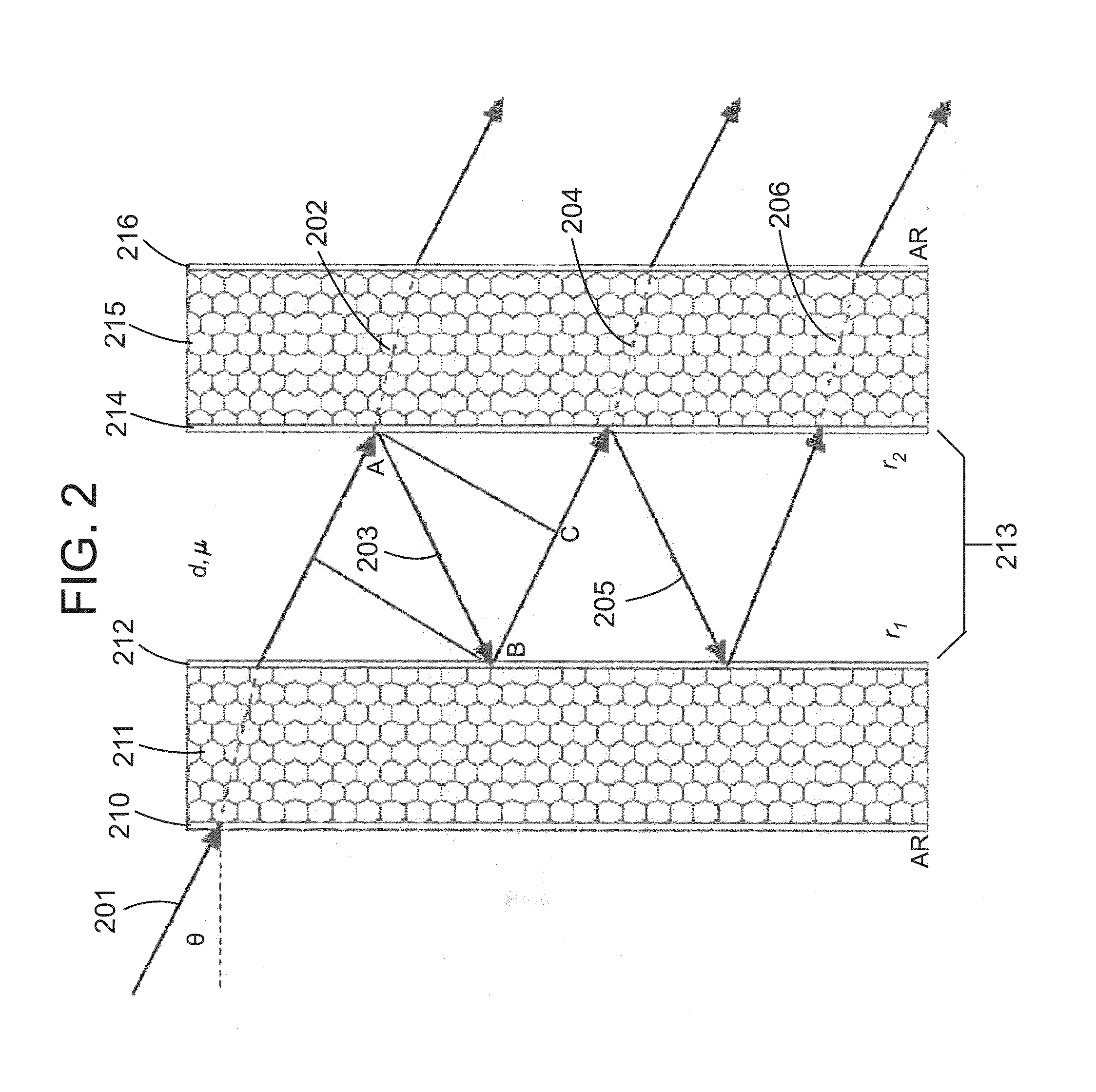Wavelength Selective External Resonator and Beam Combining System for Dense Wavelength Beam Combining Laser
- Summary
- Abstract
- Description
- Claims
- Application Information
AI Technical Summary
Benefits of technology
Problems solved by technology
Method used
Image
Examples
Embodiment Construction
I. Introductory Systems
[0053]FIGS. 1-11 illustrate and provide insight into the operation of external resonators that utilize thin-film filters as wavelength selective elements. The embodiments depicted in FIGS. 1 and 10 include laser sources that consist of a plurality of spatially separated individual laser emitters. The individual laser emitters may be diode lasers, fiber lasers, solid-state lasers, or any other type of lasers. The plurality of individual emitters that constitute the laser sources 101 and 1001 may be arranged in a one dimensional array, a two dimensional array, or a variety of other configurations. In some embodiments, the laser sources 101 and 1001 consist of stacks of diode bars, where each bar has a plurality of emitters. Typically, individual diode laser emitters emit beams with an asymmetric beam profile having two perpendicular axes perpendicular to the direction of propagation upon which the beam diverges at disparate rates. The two axes can be identified ...
PUM
 Login to View More
Login to View More Abstract
Description
Claims
Application Information
 Login to View More
Login to View More - R&D
- Intellectual Property
- Life Sciences
- Materials
- Tech Scout
- Unparalleled Data Quality
- Higher Quality Content
- 60% Fewer Hallucinations
Browse by: Latest US Patents, China's latest patents, Technical Efficacy Thesaurus, Application Domain, Technology Topic, Popular Technical Reports.
© 2025 PatSnap. All rights reserved.Legal|Privacy policy|Modern Slavery Act Transparency Statement|Sitemap|About US| Contact US: help@patsnap.com



